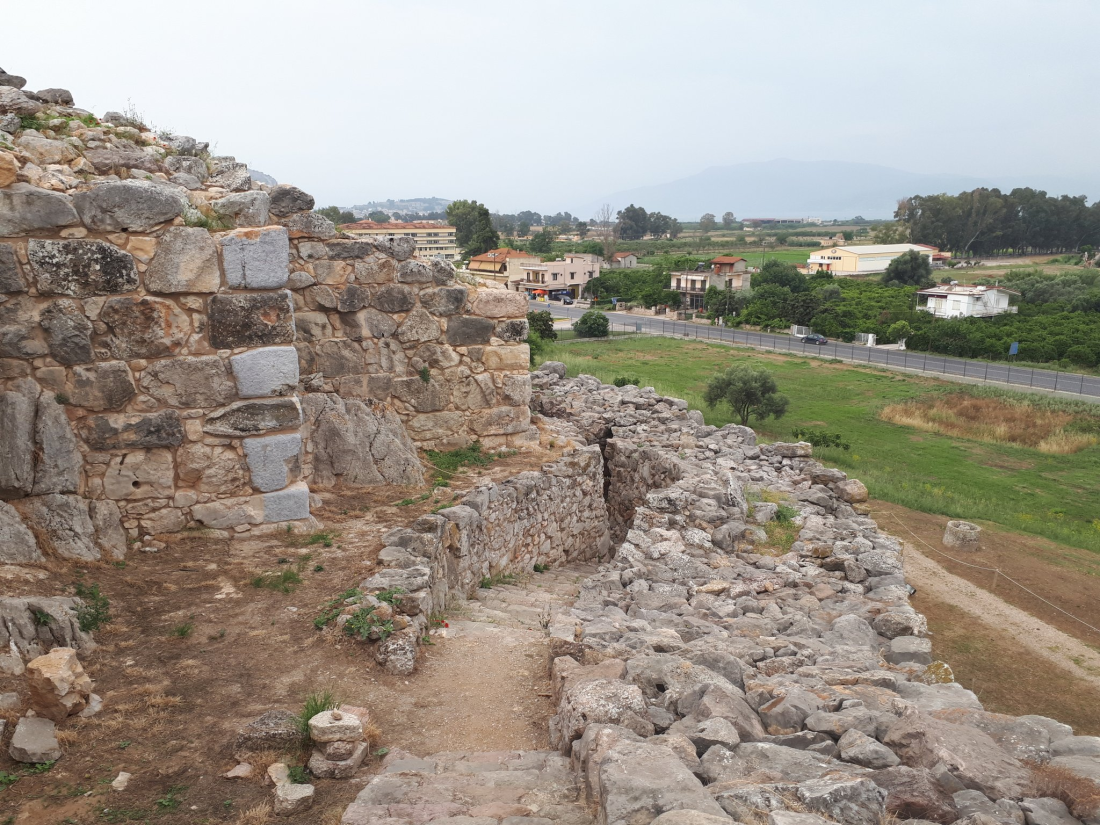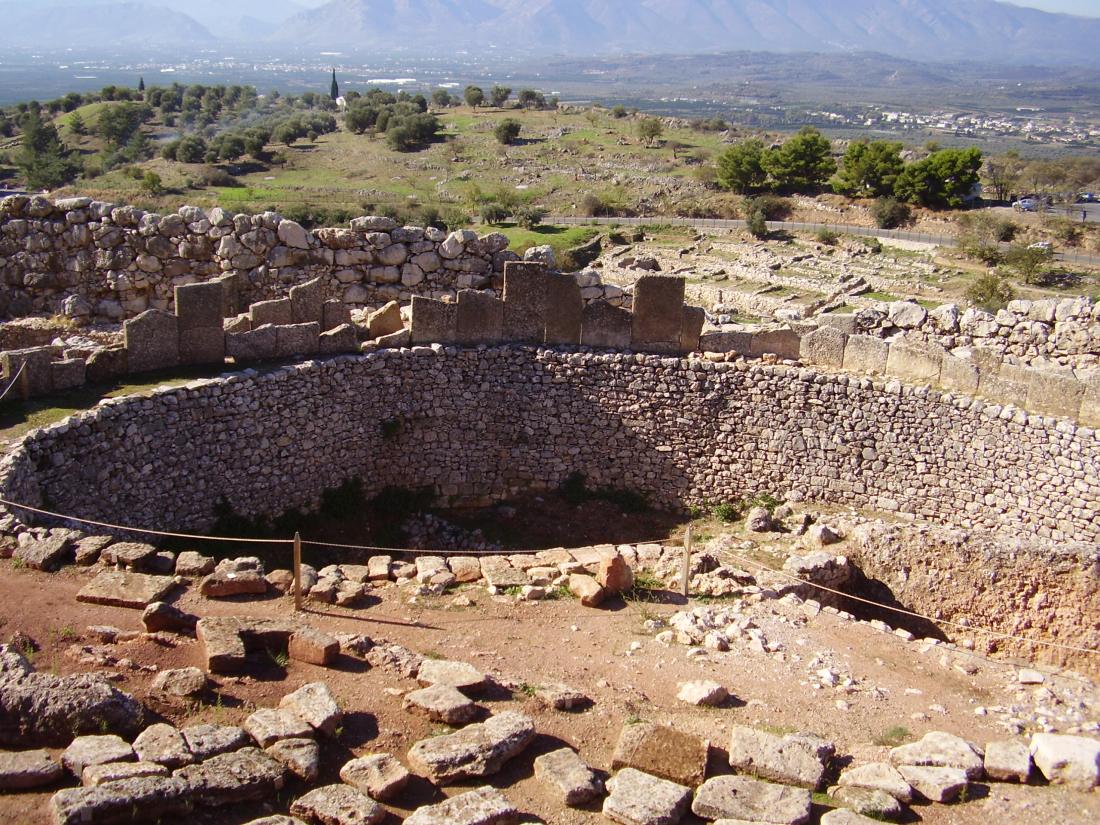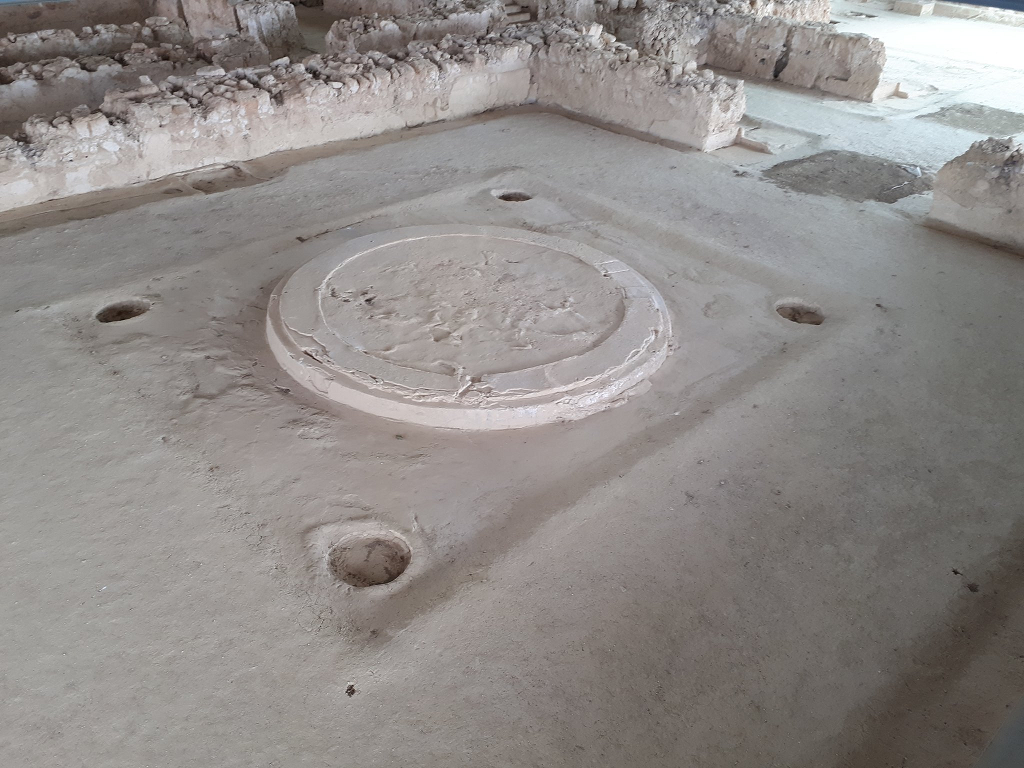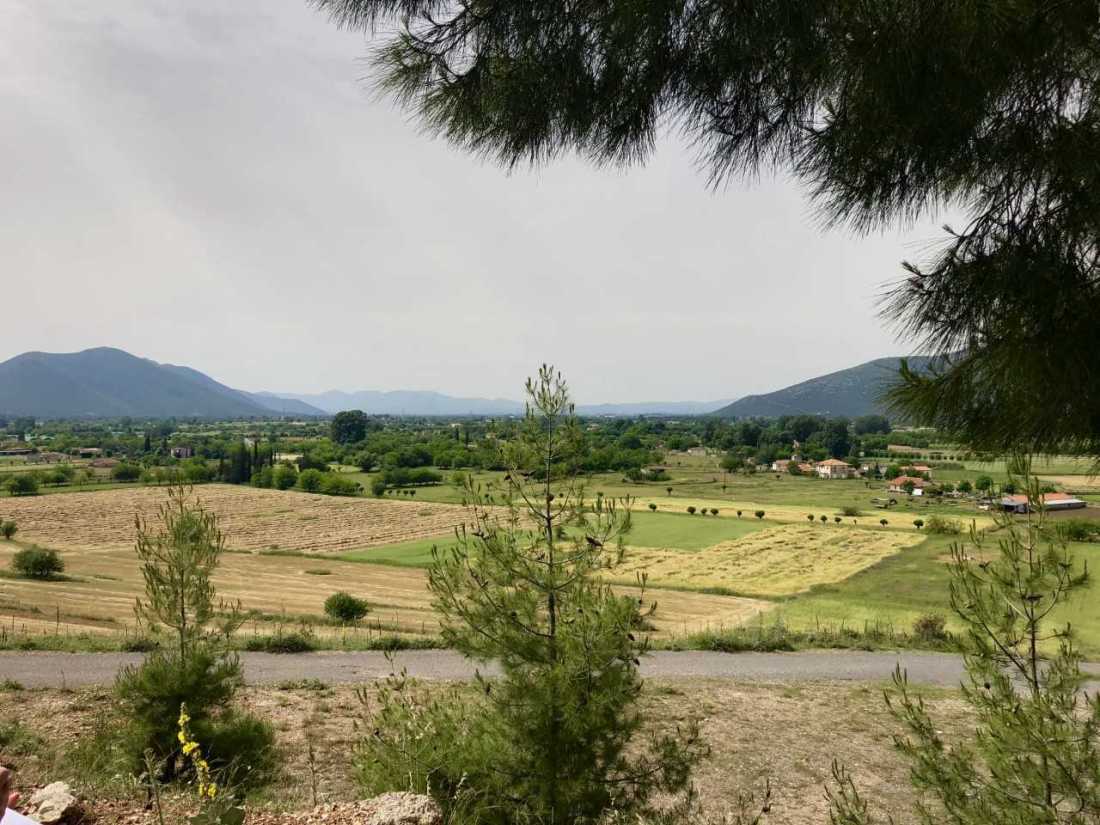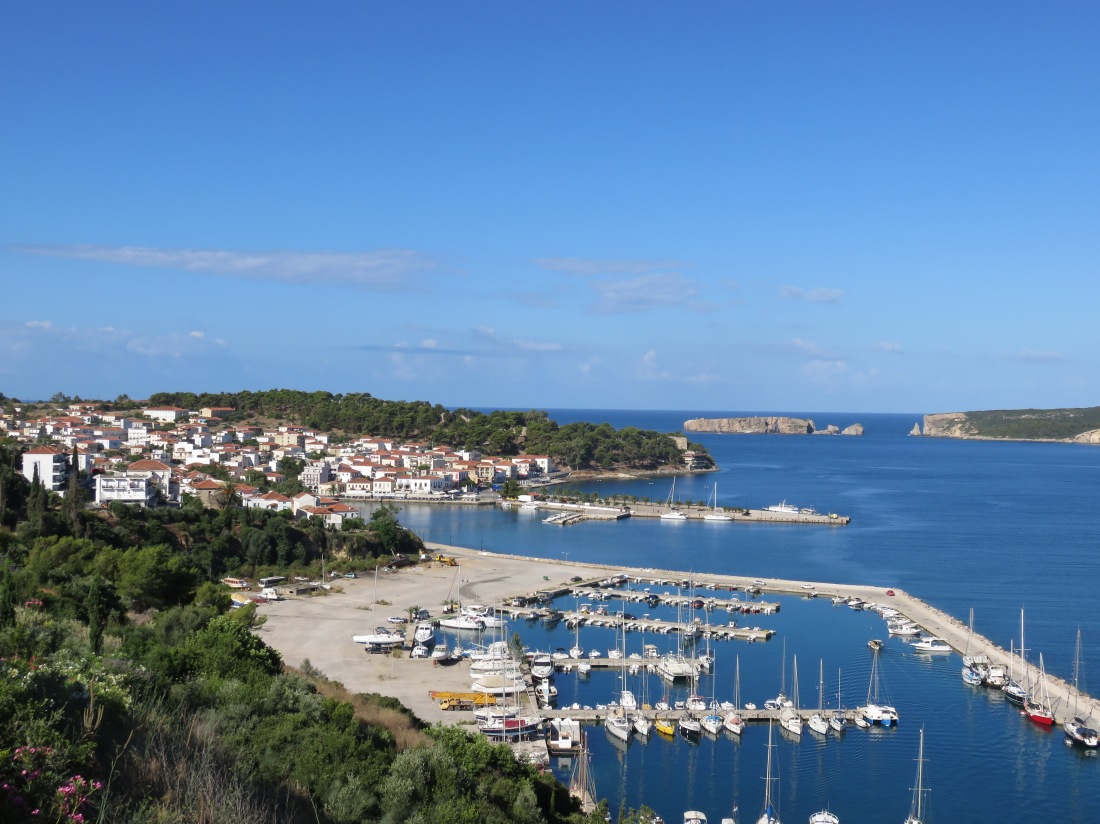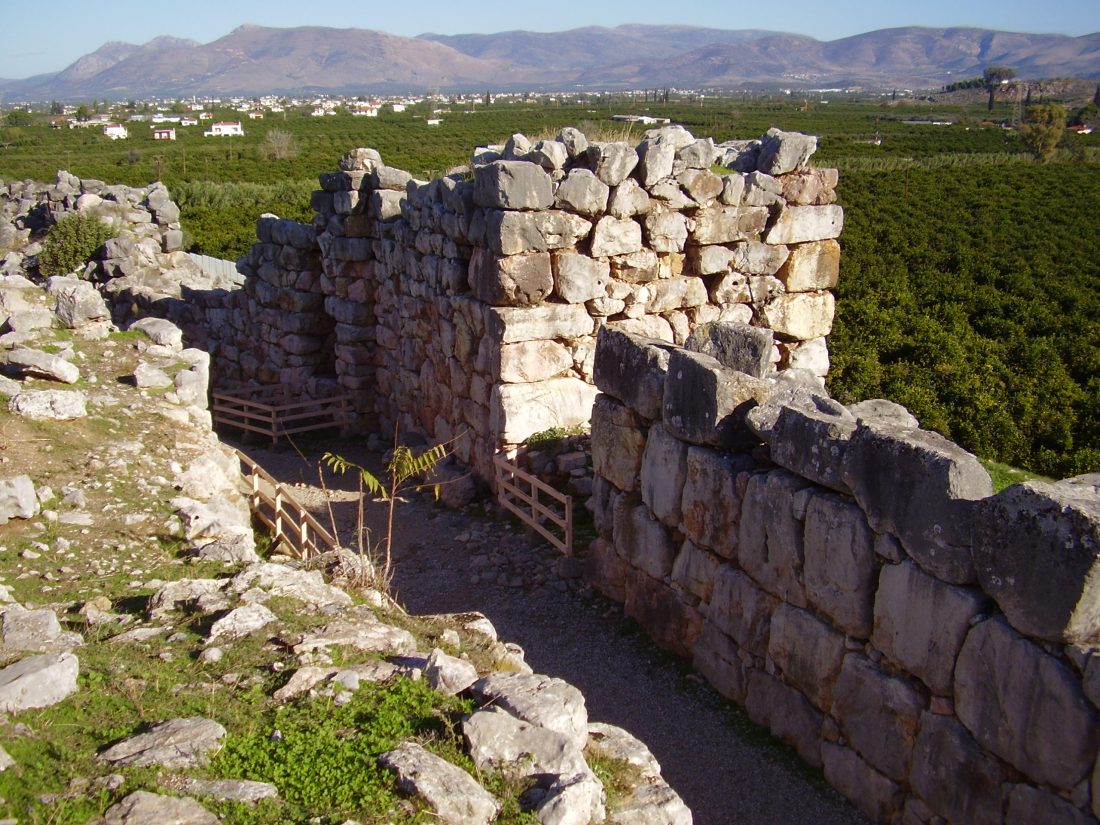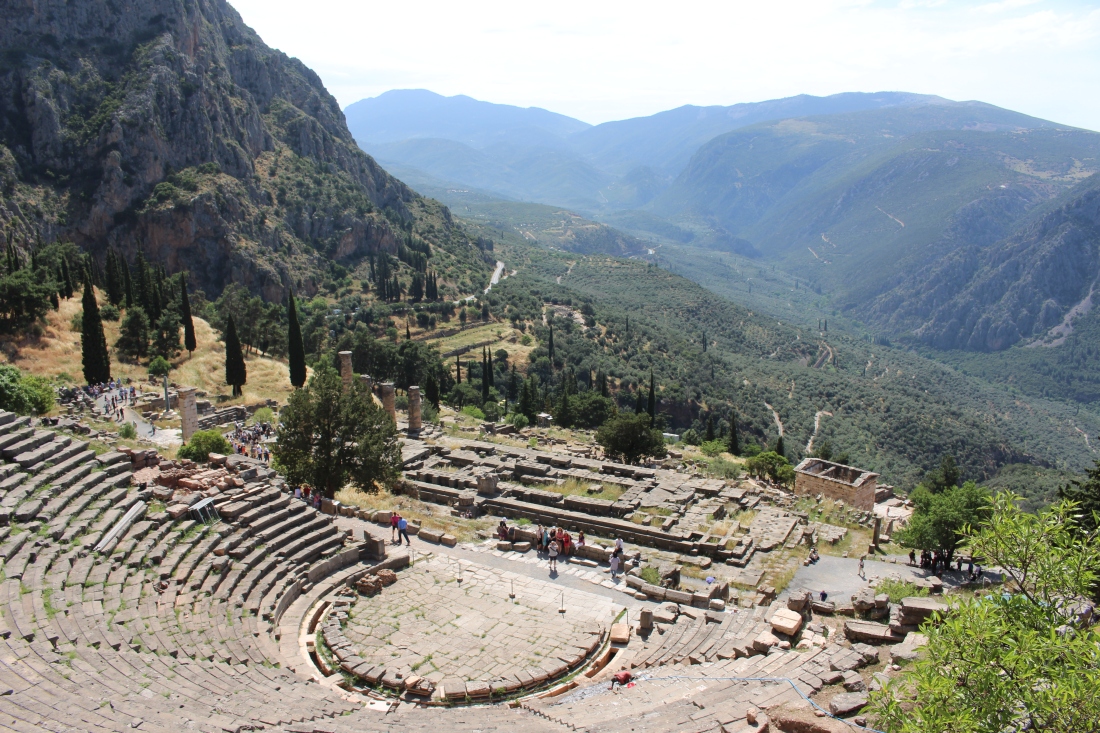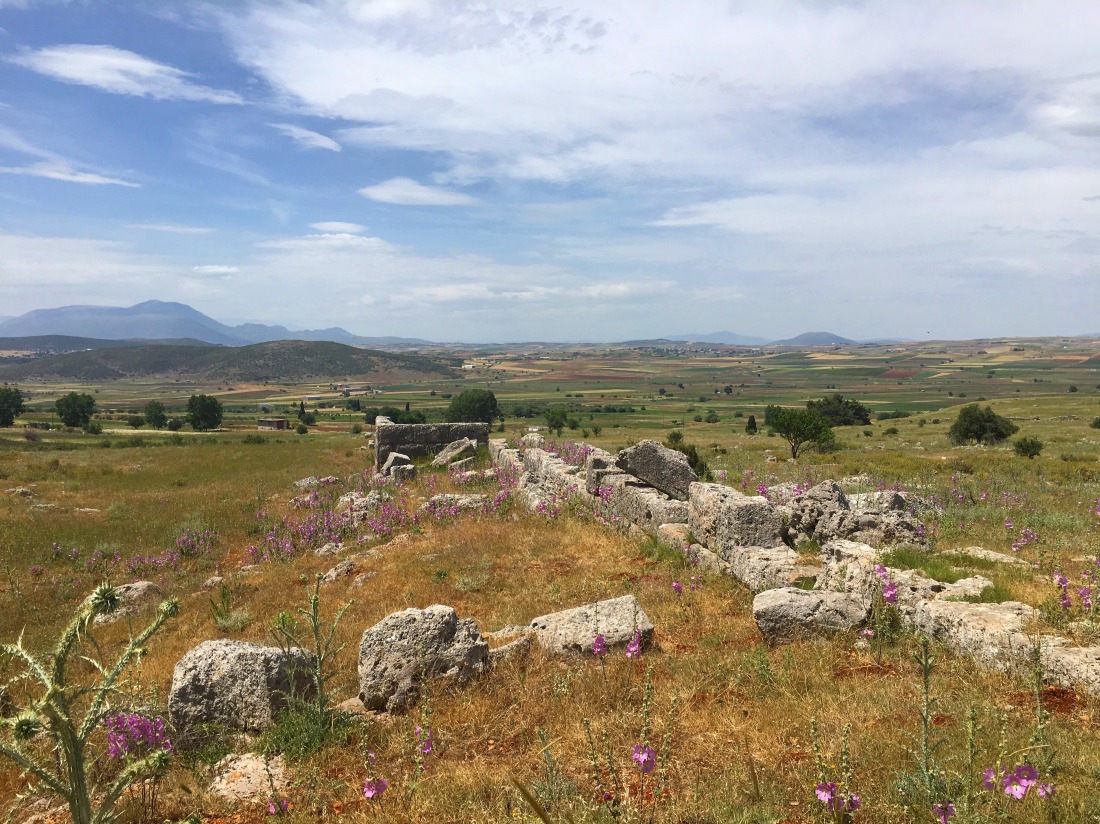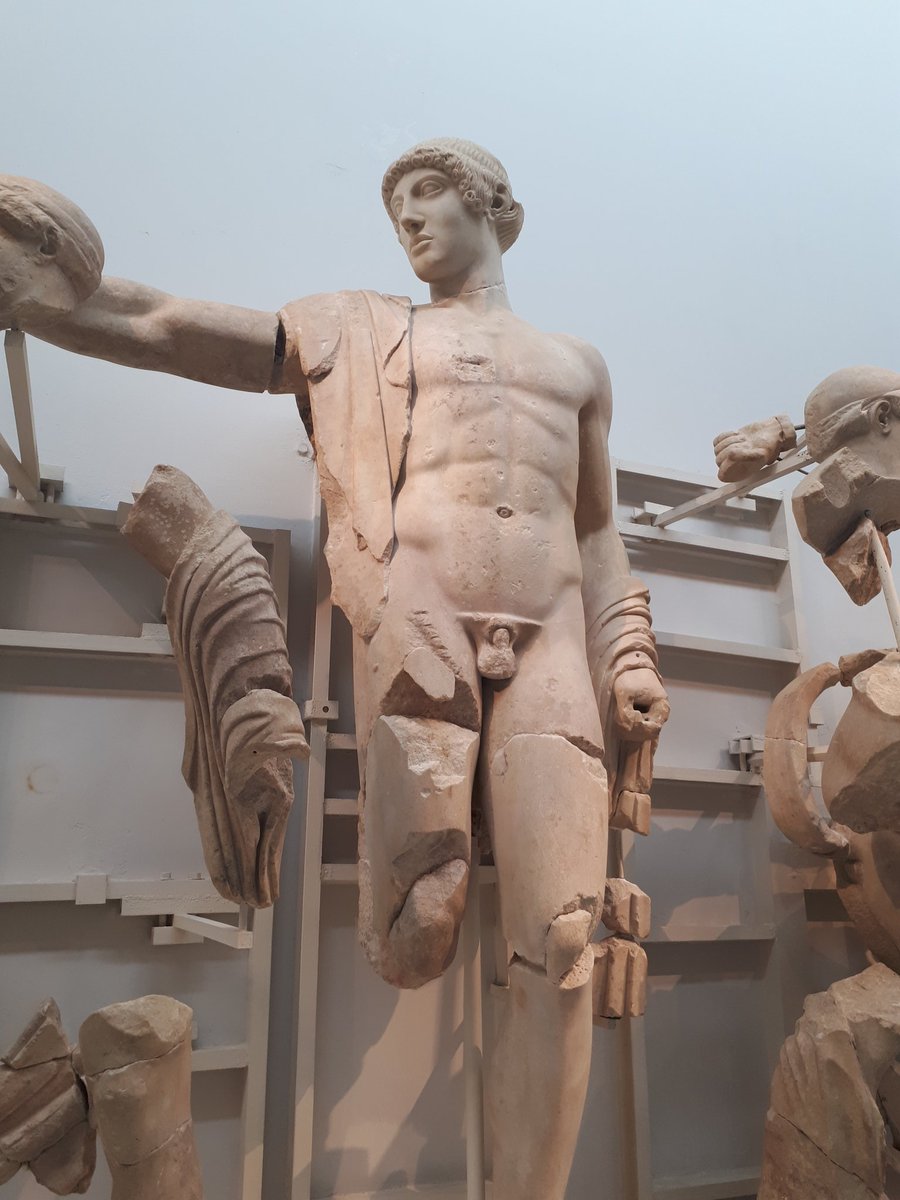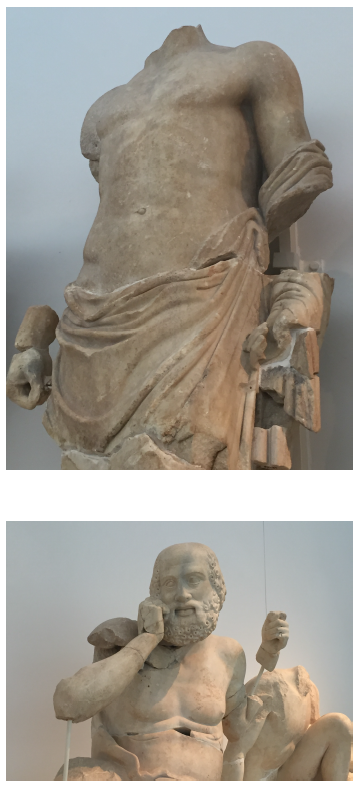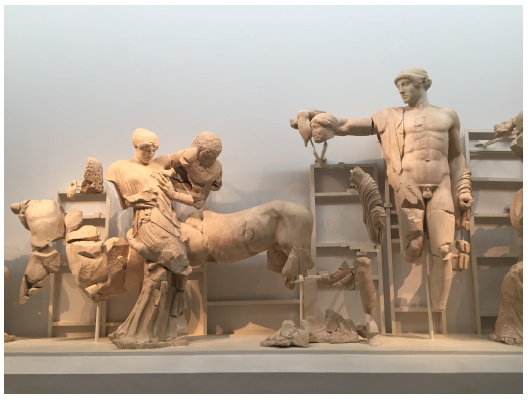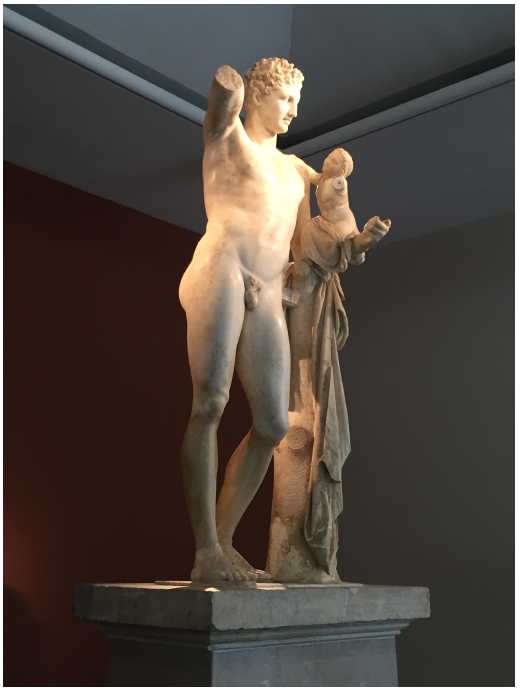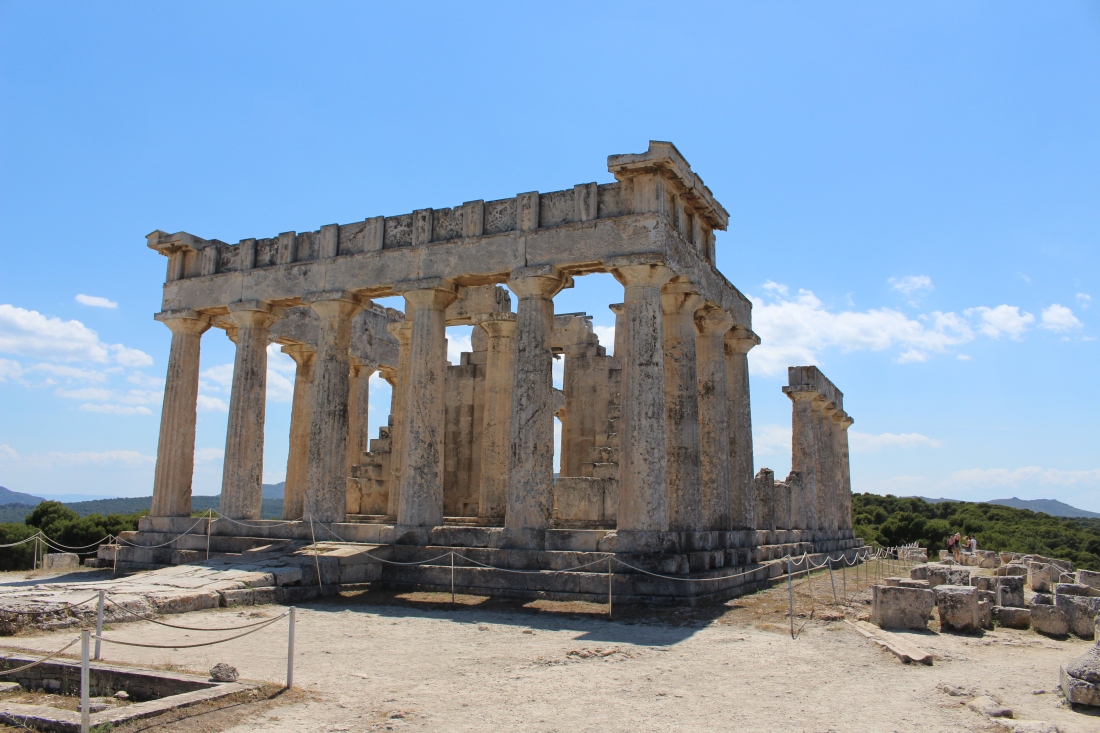
Let me preface my remarks by emphasizing that I am neither a Classicist nor a Civil Engineer. So, this is strictly an amateur’s perspective.
Whether it is a magnificent temple atop a mountain or a massive fortification astride a plain, one cannot help but be impressed by the achievements of ancient Greek engineering. The sites that have endured wars, political and geological earthquakes stand as testaments to Greek tenacity, ingenuity, engineering skills, and sheer dogged industriousness. But it was not all simply to fulfill a function and nothing more. They had a commitment to architectural design that often exceeded any practical needs. Finally, there is the matter of scale. The ancients did nothing by half-measures; it was “Go big, or go home.” So, how can we explain this? I’m not in a position to give a definitive answer. What follows are a few observations through my untrained eyes.
Materials. The ancient Greek builders were purely practical in one sense. Out of necessity, they used every material that came to hand. Fortunately for them, as Spee and Mawforth point out, owing to the area’s geological development there was an abundance of building materials. Even though much of Greece is arid, there was sufficient water and soil in certain locations to make remarkably durable mud-brick. The terrain was littered with rocks of all shapes and sizes, and where it was not lying about it could be hacked or hammered out of mountainsides. No rock was too small to be left unused when construction demanded. And of course, geology had blessed Greece with vast quantities of marble – the preferred material for the stunning temples that speak to the heart of ancient Greek religious, political, social and cultural life. For those not so blessed there was ‘marble in the making’: limestone – not as attractive or as durable, but easier to work with. And it could be covered with stucco to improve its appearance. For roof supports the Greeks relied on wood. Despite the relatively dry climate there were substantial forests with large trees that served that purpose. But the ancients may have imported wood from the Levant and the Black Sea.
Building Sites. Ask any modern realtor what determines the value of a home or property and they will answer: “Location, location, location.” The fact that so many of their sites we visited have survived so long could easily suggest that the Greeks understood this instinctively. Their successors, whether Roman conquerors or Christian pilgrims and clerics, clearly recognized that they had chosen well, since they often preferred to build on the same sites. And if any one pattern stands out to the eye of a military historian it is this: whether it was a temple to honour Zeus or Apollo, or a fortress to keep enemies at bay, the Greeks built with a keen eye for the religious and/or strategic value of high ground, the Parthenon being the exemplar. Others included the temples of Apollo Epikourios (Bassae), Poseidon (Sounion), and Delphi. Height placed one farther from one’s enemies, and perhaps closer to the Gods. Hillside sites also lent themselves to the construction of theatres and stadiums, since the slopes could be used to seat the audience, with or without built-in seating (the theatres and odeions on the slopes of the Acropolis or at Epidaurus; and the stadiums at Messene and Nemea). But apart from practical considerations, it is important to remember that the agonistic mentalité emphasized being better than everyone else. Height conferred status – so, the higher the better.
Design. Temples. To the untrained eye, they seemed to follow a standard design: oriented east-west; three steps; Porch; Naos; Metopes and Triglyphs; Friezes; Columns six by twelve plus one. You seen one, you seen ‘em all! Not so. As Dr. Murray pointed out, each displayed subtle (and some not so subtle) deviations (e.g.s the Parthenon – no straight lines; the Temple of Aphaia – one can see through it; some columns were built with stacked ‘drums’, others with single piece units; the Temple of Poseidon had no interior columns; Temple of Apollo Epikourai at Bassae faces north-south owing to land available, and has an unusual side door). We also noted visible shifts in column design over time from the simpler Doric through Ionic to the more elaborate Corinthian. Dr. Murray also highlighted variations in the fluting on columns, and that some columns are thicker than others. Temple designs were shaped by many things, such as location, weather and availability of materials. We can see the influence of architects such as Iktinos at the Parthenon and the temple of Apollo Epikourios, but also that of powerful ‘enthusiasts’ of the classical style, such as Herodes Atticus and Hadrian, at many sites. But for the visible expression of the Agonistic spirit it is hard to beat the Parthenon. It is the quintessential physical manifestation of the ancient Greeks’ self-image of the greatness of their civilization and of a celebration of its military power. It might also be fair to suggest that many of the ancient temples survived because their designs were so malleable. They could be re-purposed by subsequent rulers and religious factions. It did not take a lot of imagination or renovation to convert a temple site into a Christian church.
Fortresses. The design of forts was largely dictated by topography and availability of materials. But designs also changed over time from the Mycenaean to the Classical and beyond. This reflected both the evolving skills of the many builders – a learning curve, with knowledge and skills being passed on (or re-learned if necessary) to those who became artisans – and the changing tactical threats, such as the emergence of artillery (catapults), battering rams, and siege towers. The Mycenaean era fortress at Tiryns (curiously shaped like a modern chainsaw) incorporates multiple design features: materials such as mud-brick, rock conglomerate, and massive stone blocks, some roughly fitted and others more carefully shaped and placed; massive walls (7.5m thick by 7.5m high); a steep approach ramp; narrow gated entryways with double doors that could trap invaders in ‘killing zones’; bastions, and a postern gate for use as a sally port. Although Tiryns lacked the advantage of significant high ground, it would have posed a serious challenge to an attacking force. Messene, a 4th Century BC fortified community on the imposing west side of Mt. Ithomi, was protected by double layer block walls and towers. The walls, which extended for nine kilometers and were constructed of shaped blocks, enclosed the entire city, its temples and agricultural areas, and were designed to withstand a prolonged siege, even by catapult artillery. A student of Early Modern fortresses would recognize many of the same features of the Vauban-style in the Parthenon, which was as much a fortress as it was a religious site. But as Professor Sears noted, however impressive they might have been, fortresses weren’t necessarily signs of strength. Rather they were indicators of communities facing conflict or regional instability. For example, the walls of Athens were extended to Piraeus to ensure that the city could survive a siege. This would not have been necessary if Athens had felt secure.
Engineering. The scale of the Parthenon, the 9 km walls of Messene built in 90 days, the 120-ton (estimated) lintel block of the Treasury of Atreus… More times than I can now count Doug, Scott, and I, among others, commented to each other: “How in hell did they do it?” Today, the construction of large buildings involves mechanized machinery, such as tower cranes and earth-moving equipment, capable of lifting moving, and placing large, heavy pieces of metal or concrete. Our texts and the lectures told us quite a lot about the what, where, when, and why of ancient Greek construction, but not much about the how. So, we are left to speculate on the engineering techniques they employed to create such impressive works. But ours need not be ill-informed speculation, because the evidence is all around. The rocks are not silent; they speak to us. In fact, they speak volumes about how these structures came to be. The rocks tell us that the ancient Greeks had more resources, tools, and skills at their disposal than we might give them credit for. This seems to be a reasonable assumption, because they made seemingly impossible tasks possible.
First, construction was labour-intensive, but the Greeks had ‘people power’. They had slaves, by the hundreds in some locations, by the thousands in others. However, in certain situations, entire communities were mobilized, as was the case at Messene. Only that kind of collective effort could have built its walls in such a short time. Nor was it simply a case of having a critical mass of unskilled labour. The increasingly sophisticated structures and the preparation of materials to build them speak to a workforce with considerable skill and ingenuity. How did they come by that? Probably they experienced a lot of trial and error learning, which was passed on to subsequent generations. But it is important to remember that Greece was part of a network of ‘countries’ scattered around the Mediterranean. Its’ trading and other connections would have exposed them to the work and knowledge of experienced temple and palace builders, such as the Egyptians, who had mastered the fundamentals of construction engineering. So the visual evidence tells us that the Greek builders grasped, for example, the principles of weight distribution when building walls and arches – shifting it laterally/horizontally and downward through vertical structures like pillars and walls. Likewise, it may be fair to propose that the massive rock lintel at the Treasury of Atreus might not have been moved at all. Rather, as Dr. Sears suggested to me, after it was quarried, moved, and cut (nearly incredible feats in themselves), it could have been put on the ground or an elevated mound of earth. Then its supporting pillars could have been shoved into place under it as the Treasury was being excavated, rather than the block being hoisted into position.
Second, they had animals (horses and oxen) that– given sufficient numbers – could provide the pulling power and torque that humans lacked.
Third, upon looking at the structures we can surmise that the Greeks had tools and machinery. Rocks initially just jammed into place regardless of shape were increasingly shaped or cut to exact proportions. So, they must have had skilled artisans to do that work. Slots carved into some rock blocks show use of slings. Using slings could imply that they had small cranes or other lifting devices with counter-weights or even swivels to lift blocks into place. Marble or limestone columns or column drums that had been carved out of their parent rock could have been rolled to the temple site before being lifted or stacked into place. The Greeks almost certainly would have used wedges and levers, ramps, ladders, and scaffolding. Given the materials they used to build their temples and fortresses, it is doubtful that the buildings could have been constructed without the tools and techniques mentioned above.
Finally, the Greeks had time. Constructing a temple or a fortress could take years. The speed of construction was dictated by politics, financing, and the influence of personalities. Moreover, threats did not emerge overnight, as they do today. So, the rapid wall construction at Messene was the exception, not the norm. It simply was not necessary to work that fast in every instance.
The Greeks did not invent construction engineering. But the geology, politics and climate of Greece, and their drive to be the best, caused them to work to a simple engineering ethos: “Go big or go home.”
Sources: Mee and Spawforth, Oxford Archaeological Guides: Greece; Van Wees, Greek Warfare; notes from travel study lectures by Dr. Sears and Dr. Murray; and personal site observations.
